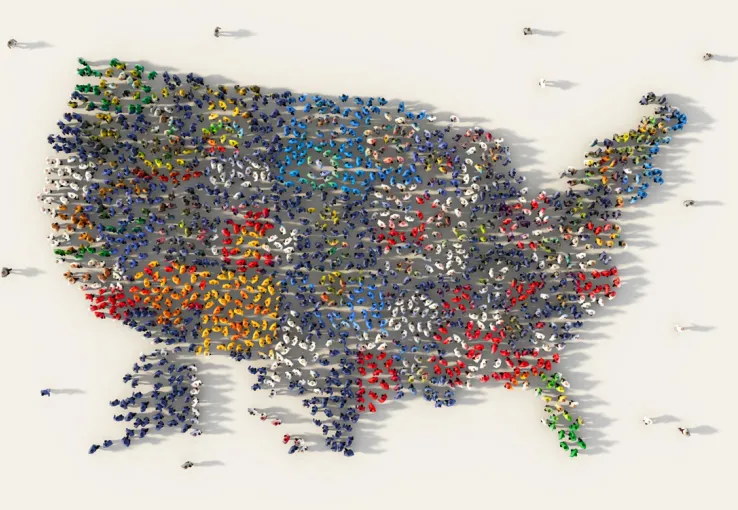Pandemic phases, as told by the market
What’s been going on, and what does it mean?
If the time between mid-March and today simultaneously feels like a blur and a lifetime to you, you are not alone. The Bellomy team has spent much of this time observing the world as it has changed and talking with consumers and clients about what these changes mean. We found the following five pandemic phases based on our observations, conversations, primary research, and secondary research. Here, we analyze what we’ve been through, where we believe we are going, and what you can and should be doing to learn more and develop strategies for the future.
Our pandemic phases are a generalization of how the nation is experiencing the pandemic. How people experience these phases will be influenced by their general concern. Understanding where your consumers fall on a continuum of concern and how these phases dictate their actions will help build a clearer picture of the changing market landscape.

Good Old Days
Remember the Good Old Days?
We went to concerts, sporting events, and movie theaters. We high-fived. We shook hands. We hugged. We walked around stores for retail therapy. The markets reached new highs.
As consumers, we were set in our ways. We had routines and favorite products, and it was difficult for brands to infiltrate our consideration sets.
As businesses, we had established operations, supply chains, foundational research, and customer relationships — with a stable sense for the market landscape.
Confusion & Fear
 The pandemic hit.
The pandemic hit.
Suddenly, toilet paper was worth more than its weight in gold. We stocked up as much as our budgets and storage space allowed. Aisles reserved for paper and cleaning products were bare. States locked down. Schools shifted to distance learning. Stores and restaurants began to close. Many lost their jobs, while others scrambled to prepare appropriate ecommerce platforms.
As consumers, we had the rug ripped out from under us. Within a few short days, many of the products and routines we relied upon were no longer available, possible, or affordable. We went into survival mode.
As businesses, we struggled too. We questioned the relevance of our existing information, processes, and relationships, and we became unsure of the reliability of new information and insights.
Isolation & Chill
A period of continual lockdown marked by many not being sure what day of the week it was.
Much of the panic died down and the socially-distanced reality set in. We established new routines. Store shelves were better stocked, but waves of various out-of-stocks continued.
As consumers, we were in experimentation mode, trying different things in an effort to find calm after the storm. Our consideration set became more open and fluid than in the past.
As businesses, this was the prime time to start understanding and forecasting the New Normal — the time to harness existing foundational knowledge as a lens for understanding shifts. The Isolation & Chill phase was not the time for new foundations, but for exploring, hypothesizing, and influencing the New Normal.
Recover & Transition
As states begin to reopen, some of us are now in the early stages of this phase — as such, the path forward becomes a little less clear.
Our vision is hazy as we work to forecast what the future of this phase and the New Normal may look like. Some can’t wait to start the transition, while others are more hesitant. Regardless, the New Normal won’t happen overnight. We’ll gradually head back to offices, stores, and restaurants as we exercise social distancing, wear masks, and scrutinize sanitation practices. Some of our newly found omnichannel habits, like online grocery ordering, mobile banking, or app-enabled restaurant take-out and delivery, might be here to stay.

As consumers, we’ll be thinking about what we want to carry forward from Isolation & Chill and what we want to abandon. We may still be open to new options, but that window will soon close, and we'll be set in our ways — old or new — once again.
As businesses, this is a time for continued exploration and understanding. Building on our knowledge of the Good Old Days and Isolation & Chill, we can begin to see trends in the Recover & Transition phase that start bringing the picture of the New Normal into focus.
New Normal
This is a time many of us are dreaming about.
It will likely be most significantly marked by a COVID-19 vaccine and/or proven treatment methods and ample testing both for antibodies and the virus itself. Moreover, it will be the point at which we feel safe congregating again. With solid answers on the healthcare side, we’ll start heading back to concerts, sporting events, and movie theaters. We may begin to high-five, shake hands, and hug. We’ll bring forward some new habits that we formed during the Isolation & Chill and Recover & Transition phases. Others we’ll abandon, either for completely new — dare we say novel — alternatives or for our preferences from the Good Old Days.
As consumers, the New Normal will mark a different set of routines and habits. Just as in the Good Old Days, they will be harder to break.
As businesses, this is the time to lay a new foundation. Most likely, the benchmarks of the Good Old Days are now outdated, and we must begin to reground ourselves.
Navigating Together
As you continue to navigate through these uncertain times, don’t hesitate to reach out to Bellomy for support, consultation, and next steps. We’ll continue to be your eyes and ears across industries and look forward to helping you be successful today and in the New Normal.
- covid-19
Topics
 Get the pandemic personas at your fingertips
Get the pandemic personas at your fingertips
Download our PDF for insight on the seven segments of consumers we identified based on their reactions to the COVID-19 pandemic. Get a detailed breakdown of the segment profiles and learn more about how consumers' attitudes and behaviors have shifted since March.


